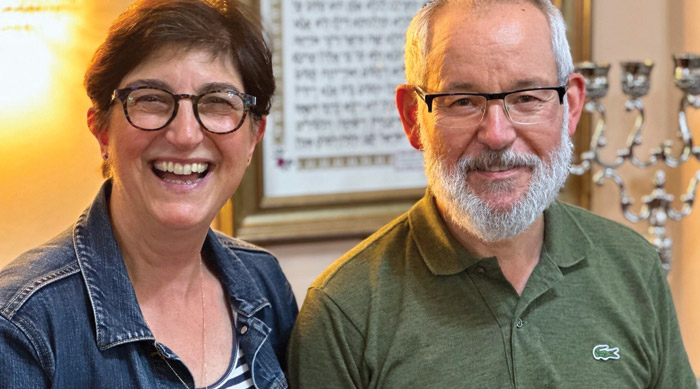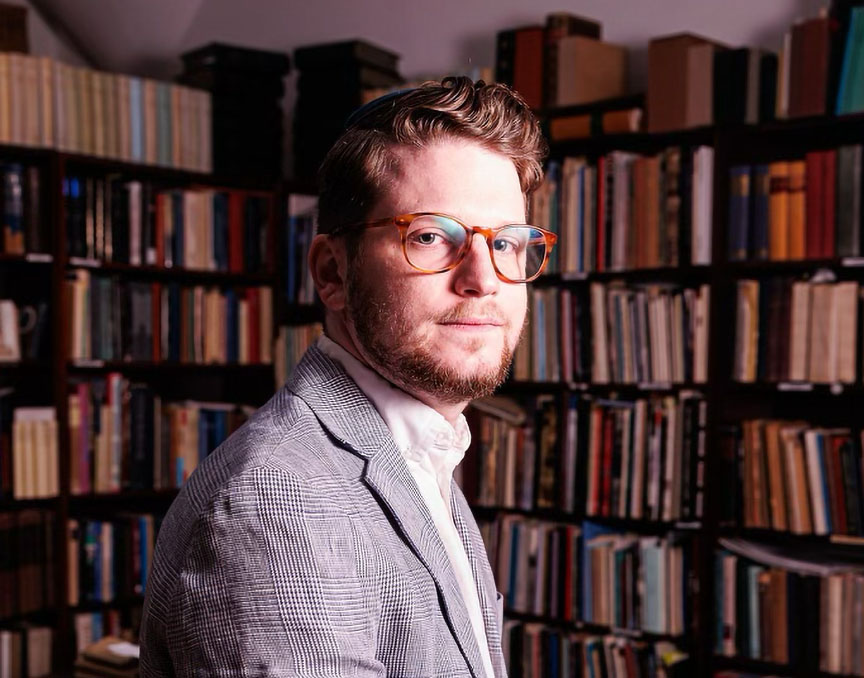Upon visiting the high-stakes backgammon competition March 8 at Sephardic Temple Tifereth Israel, witnesses were welcomed by the sound of dice on board, the cursing of bad luck and the occasional exclamation of “shesh besh!”
The phrase — another name for the game — comes from the Hebrew word for six (shesh) and the Turkish word for five (besh). Those two numbers represent the best possible rolls of the dice you could hope for to begin the game, giving you an edge over your opponent. When you roll a five and a six, you better call it out loud, shouting “shesh besh” at the top of your lungs so people are impressed not only with your roll, but also with your ability to call it.
At stake in the inaugural competition, which was held in conjunction with Jews Indigenous to the Middle East and North Africa (JIMENA), was an iPad Air, as well as an iPad mini distributed early in the day to the competitor with the best board. Temple congregant Bob Ourian took home the latter with his bright-hued board, made in Isfahan, Iran, and crafted in the elaborate khatam style — inlaid with bone, ivory and wood.
Before the competition began, Nathaniel Malka, a JIMENA advisory board member, said shesh besh is a staple in Sephardic households.
“I have a huge Iraqi family, and when I’m with family, everyone is always bragging about being the best player in the family — if not the world,” he said. “I think everybody in this room goes around telling their family they’re the best in L.A., and the scary thing is, after today, one of them can say, ‘See? I can prove it!’ ”
Sephardic Temple’s president Alex Rachmanony explained, with sage-like wisdom, “There are two ways to play. You can play offensively or defensively.” Rachmanony went on to play in the semifinals by alternating between the two strategies.
Competitors were a hodgepodge of young and old, men and women. During the preliminaries, 31-year-old Sanaz Meshkinfam took on Saul Mathalon, who at 91 was the most mature player competing at the event and who brought with him a whopping 80 years of shesh besh experience.
Mathalon attended with his wife, Mereille, who, as the tournament progressed, became a highly coveted good-luck charm. When somebody was down on their luck, they’d call out her name — “Mereille!” — and she’d make the rounds, blow on their dice, and, more times than not, work miracles.
“Saul, you’re keeping my confidence in check,” Meshkinfam remarked after all of Mathalon’s checkers were collected in a neat pile and her chips were scattered across the board, signaling a win for the elder. Meshkinfam, an independent consultant for community and government relations, first heard about the tournament through JIMENA.
“I knew that I’d be playing different generations,” she said about attending the event. Overall, she decided to participate because the game “brings back childhood memories.”
“Do you know who taught me how to play?” she asked Mathalon during their game. “My grandmother,” she answered. She learned when she was only 6.
And although shesh besh could be perceived as a man’s game, her grandmother was one tough cookie who knew her way around a board. Meshkinfam, who grew up in Iran, said that the strategies she employed in shesh besh helped her learn some valuable life lessons — like when it’s wise to be on the offensive or defensive, when to oscillate between the two, and that half the game is luck and half is strategy and smarts.
Another player who used shesh besh as a metaphor for life was Albert Cohen. While watching Mathalon slay his opponents, one after the other, he said, “This is the game of life.”
Soon after, he relayed the story of the time his granddaughter, Amberly Hershewe, a current student at Shalhevet High School, asked Cohen to teach her how to play. Cohen’s No. 1 tip for shesh besh success was: “Don’t be vulnerable, and if you’re going to be vulnerable, calculate your move.”
By the end of day, the community backgammon competition looked like after-hours at prom. Plastic cups filled with half-consumed soft drinks littered the tables as disheveled tablecloths draped off the tabletops. Competitors with bloodshot eyes due to more than five hours of nonstop shesh besh played their final games.
The event started at 10 a.m. with more than 30 players and dragged on until 5:30 p.m., when the number of competitors dwindled down to two. By 4 p.m., tired players mumbled, standing around, waiting for semifinals to finish and the finals to begin.
Cohen’s skill took him to finals, where he faced John Sherf, a family man who, by the end of day, was glued to his phone, promising his wife he’d be home soon. In a moment of vulnerability, Cohen made a move, making his checker susceptible to his opponent.
“What are you doing in the last game with a move like that?” the onlookers yelled at him.
It so happens that Cohen’s risky move is what made him champion. He won the iPad Air and, of course, said he was giving it to his granddaughter.





















 More news and opinions than at a Shabbat dinner, right in your inbox.
More news and opinions than at a Shabbat dinner, right in your inbox.